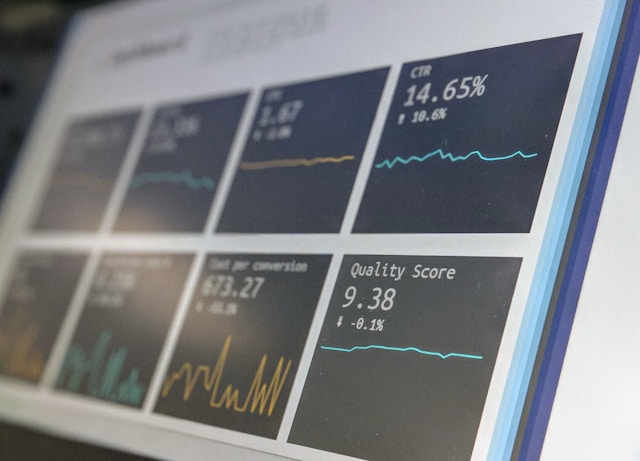In an increasingly interconnected global economy, the need for seamless, fast, and cost-effective cross-border payments has never been greater. Whether it’s a business making international transactions, a consumer sending money to family members abroad, or large financial institutions transferring funds across borders, the process of moving money between countries can be complex and costly. But emerging technologies like blockchain are transforming this process, offering new solutions that are faster, more secure, and more affordable than traditional methods.
Blockchain, originally known for being the technology behind cryptocurrencies, is now being leveraged to improve cross-border payment systems. By removing intermediaries, reducing transaction costs, and increasing transparency, blockchain promises to revolutionize the way cross-border payments are made. In this blog post, we’ll explore how blockchain is changing the landscape of international payments, its advantages, key use cases, and how businesses, including those in industries like oil and gas, can benefit from adopting blockchain for cross-border transactions.
The Importance of Efficient Cross-Border Payments
Before diving into how blockchain is transforming cross-border payments, it’s important to understand why this topic is so crucial. Cross-border payments have long been a pain point for businesses and individuals alike. The traditional methods, such as SWIFT transfers, rely on a network of intermediaries, which not only increases costs but also leads to delays in processing. The fees associated with these transfers can be high, especially when sending smaller amounts or transferring funds to countries with less developed banking infrastructures.
These challenges often create barriers to global commerce, reduce financial inclusion, and add unnecessary costs to businesses and consumers. Blockchain has emerged as a potential solution to these problems by offering a decentralized, transparent, and secure way to transfer money across borders without the need for intermediaries.
How Blockchain Works in Cross-Border Payments
At its core, blockchain is a decentralized and distributed digital ledger technology that records transactions across multiple computers. Unlike traditional databases, which are controlled by a central authority, blockchain allows for a peer-to-peer network where transactions are validated by consensus mechanisms and recorded in a way that is tamper-resistant and immutable. CentricDXB understands the potential of blockchain to revolutionize industries by providing transparent, secure, and efficient transaction systems.
In the context of cross-border payments, blockchain technology facilitates the direct transfer of funds between two parties in different countries without needing to go through banks or clearinghouses. Here’s how it works:
- Initiating a Transaction: A sender initiates a transaction by creating a request to send money to a recipient in another country.
- Validation: The transaction is then validated by a network of nodes (computers) that check the transaction’s integrity. Since blockchain operates in a decentralized manner, there is no need for a central authority to oversee the process.
- Execution: Once the transaction is validated, it’s recorded in a “block” and added to the blockchain. The funds are transferred instantly to the recipient’s wallet or account.
- Security: Blockchain uses cryptographic techniques to secure the transaction data, making it highly resistant to fraud or tampering.
By using blockchain for cross-border payments, businesses can eliminate intermediaries, streamline the process, and reduce the time and cost associated with international transactions.
Advantages of Blockchain in Cross-Border Payments
Blockchain offers a wide array of benefits when it comes to cross-border payments. Let’s take a closer look at these advantages:
1. Lower Transaction Costs
One of the most significant advantages of using blockchain for cross-border payments is the reduction in transaction costs. Traditional methods often involve multiple intermediaries, each of which charges a fee. Blockchain eliminates these intermediaries, reducing the overall cost of transferring money. With blockchain, businesses can avoid high service fees imposed by banks and third-party payment processors.
For example, oil and gas advertising agency, where large sums of money are transferred across borders, adopting blockchain can significantly reduce transaction fees, leading to considerable savings. A blockchain-based solution ensures that the money moves directly from one party to the other without being slowed down or increased in cost by third-party financial institutions.
2. Faster Transactions
Cross-border payments through traditional banking systems can take days to process, particularly if the transaction is moving between different currencies or countries with different banking systems. With blockchain, payments are processed in real-time, allowing for near-instant transactions.
For instance, a business in the U.S. sending payments to a supplier in Asia could see the transaction complete in minutes rather than the typical 2–5 business days it would take through traditional channels. This speed is particularly beneficial for industries that require quick payments, like oil and gas, where delays can impact the entire supply chain.
3. Transparency and Security
Blockchain provides a high level of transparency, as all transactions are recorded on a public ledger that is accessible to authorized parties. Every transaction is traceable and cannot be altered or deleted, ensuring that the transfer of funds is secure and verifiable.
Moreover, blockchain uses cryptographic encryption to secure each transaction, making it extremely difficult for fraudsters to tamper with the data. This is especially important for industries like oil and gas, where large transactions are common and security is paramount.
4. Reduced Risk of Fraud
Blockchain’s decentralized nature makes it far more resistant to fraud compared to centralized systems. In traditional cross-border payment systems, fraud risks arise from the involvement of multiple intermediaries, which could be compromised. Blockchain, by contrast, operates with a high level of security, ensuring that all participants in the transaction are validated and that there’s no risk of fraudulent activity altering the transaction.
Since each transaction is stored on an immutable ledger, fraudsters cannot reverse or alter a transaction once it has been recorded. This level of security can significantly reduce the risk of fraud in cross-border payments, benefiting industries such as oil and gas advertising, where financial integrity is crucial.
5. Financial Inclusion
Blockchain has the potential to offer financial services to people who are unbanked or underbanked, particularly in regions where traditional banking infrastructure is lacking. For individuals in developing countries, blockchain-based payment systems can offer a more affordable and accessible way to participate in the global economy.
For instance, by using blockchain, businesses can enable workers or suppliers in remote areas to receive payments directly, bypassing the need for traditional banking infrastructure, and ensuring they are not excluded from global economic activities.
Use Cases of Blockchain in Cross-Border Payments
Let’s explore some real-world use cases where blockchain is already revolutionizing cross-border payments:
1. Ripple (XRP) and RippleNet
Ripple is one of the most well-known blockchain platforms for cross-border payments. RippleNet connects banks, payment providers, and digital asset exchanges to facilitate fast and low-cost international transactions. Ripple uses its native digital currency, XRP, to provide liquidity for cross-border payments, ensuring that funds can be transferred instantly and without the need for a central clearinghouse.
Ripple has already partnered with several financial institutions around the world, making it a key player in transforming cross-border payments.
2. Stellar (XLM) and Financial Inclusion
Stellar is a blockchain network that focuses on improving financial inclusion by enabling fast, low-cost transactions across borders. The Stellar network facilitates cross-border payments in both fiat and digital currencies, making it a viable option for businesses and individuals in developing countries.
By offering a decentralized and cost-effective way to send money internationally, Stellar has gained significant traction in regions with limited access to banking services, empowering individuals and businesses to participate in global commerce.
3. Central Bank Digital Currencies (CBDCs)
Central banks around the world are exploring the development of their own digital currencies, known as Central Bank Digital Currencies (CBDCs). These digital currencies, built on blockchain or distributed ledger technology (DLT), aim to offer the benefits of cryptocurrencies—such as faster, cheaper, and more secure transactions—while still being backed by government authority.
CBDCs could significantly transform cross-border payments by allowing for faster settlement times, lower fees, and more efficient cross-border transfers. Some countries, such as China and the European Union, have already begun piloting their own CBDC projects.
How Businesses Can Leverage Blockchain for Cross-Border Payments
Blockchain technology offers several opportunities for businesses to optimize their cross-border payment systems. Here’s how companies can take advantage of blockchain:
- Adopt Blockchain for International Transactions: Businesses in industries like oil and gas can reduce transaction fees and speed up their international transactions by integrating blockchain-based solutions. This helps companies improve their global operations and reduce administrative costs.
- Collaborate with Blockchain Payment Providers: Partnering with blockchain platforms like Ripple or Stellar can enable businesses to access the benefits of blockchain technology without needing to build a proprietary system.
- Integrate Blockchain for Supply Chain Payments: Companies involved in global supply chains can use blockchain to ensure fast, transparent, and secure payments to suppliers and contractors worldwide.
Conclusion
Blockchain is revolutionizing cross-border payments by offering faster, cheaper, and more secure alternatives to traditional payment systems. With its decentralized nature, blockchain eliminates the need for intermediaries, reduces transaction fees, and accelerates the transfer of funds across borders. As blockchain adoption continues to grow, businesses across industries, including oil and gas, can benefit from the efficiency, security, and transparency that blockchain offers.
For companies looking to leverage blockchain to improve their payment systems, partnering with a trusted blockchain solutions provider like CentricDXB can be the key to unlocking these benefits. By adopting blockchain technology, businesses can optimize their global financial operations, reduce costs, and stay competitive in an increasingly digital and interconnected world.


